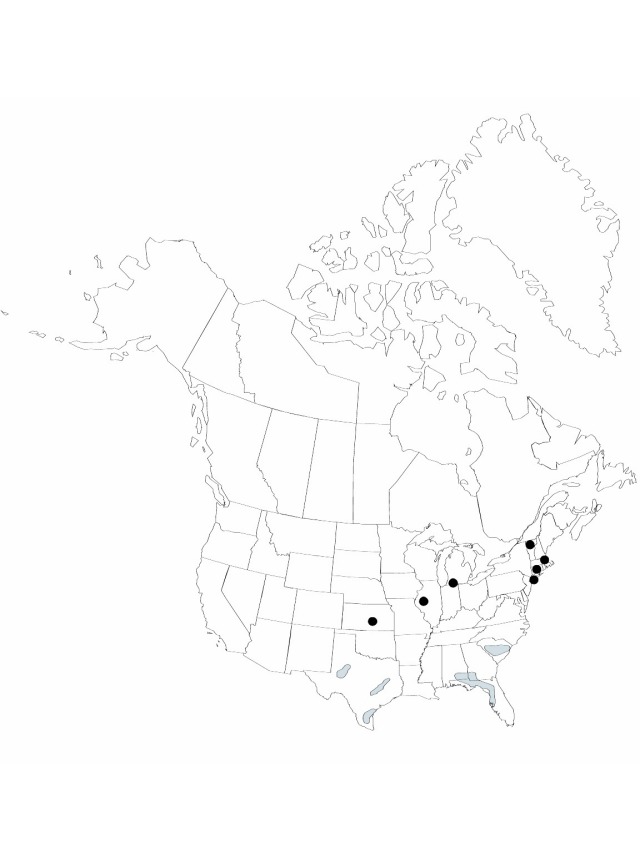Echinodorus tenellus
Index Crit. Butom. Alism. Juncagin. 21. 1868.
Herbs, annual, relatively slender, to 25 cm; rhizomes absent. Leaves: submersed leaves mostly present, sessile; emersed leaves with petioles 4–5-ridged, 1.2–9.5 cm; blade with translucent markings absent, linear, 1–7.4 × 0.2–0.5 cm, base attenuate; if emersed, narrowly lanceolate to ovate. Inflorescences umbels, rarely racemes, of 1–2 whorls, each 4–6-flowered, erect, to 6 × 8 cm, not proliferating; peduncles terete, 1.2–4 cm; rachis absent or if present, terete; bracts connate ca. ½ length, deltate, 2.8–4.9 mm, coarse, margins delicate; pedicels spreading, 0.5–3 cm. Flowers 6–8 mm wide; sepals slightly appressed, 3–5-veined, veins not papillate; petals clawed; stamens 9; anthers basifixed; pistils 15–20. Fruits obovate, flattened, 0–3-ribbed, not abaxially keeled, 0.8–1.5 × 0.8–1 mm, glands absent; beak lateral, 0.1–0.2 mm. Chromosome number unknown.
Phenology: Flowering summer–fall.
Habitat: Sandy soil along margins of small streams or lakes
Elevation: 0–1500 m
Distribution

Ala., Conn., Fla., Ga., Ill., Kans., Mass., Mich., N.Y., S.C., Tex., Vt., se Mexico, West Indies, Central America (Guatemala), Central America (Nicaragua), South America
Discussion
Echinodorus tenellus has often been separated into two species, one in North America and the other in the tropics. Whenever Echinodorus is studied throughout the range, differences between the two species break down, and a continuum exists from one species to the next. We recognize that overlap; therefore we are combining E. parvulus with E. tenellus.
Selected References
None.